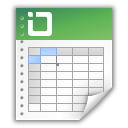NJ FileMaker Developer Group Meeting Recap: GoDraw – 03-28-12
Another great session at Essex Computer in Paramus.
We had the pleasure of having Todd Geist from Geist Interactive remotely demoing GoDraw.
Todd always blows me away. He is unbelievably smart with a keen eye to design producing highly, sought-after solutions for FileMaker, such as telephony integration or GoSign to name a couple.
The brand new solution, GoDraw enables users to draw on an image in FileMaker Go. It is amazing and we’ve long waited for such a solution.
The use cases are endless:
- Emergency response: Take pictures at a crash site. Now you can mark them up.
- Delivery service: broken package can be marked with exact damage location.
- Architects: take a photo at a site. Add your own doodle to show what the building would look like with another floor.
mazing and we’ve long waited for such a solution.
You can draw on a plain canvas of different colors or use an image (from camera or gallery) and draw on it with different colors and stroke sizes. You can even switch modes to erase part of your drawing. Once you save it, it will be accessible from FileMaker Pro on a desktop. You just can’t modify it from the desktop and re-save it. You can however, always make changes from FileMaker Go at a later time. The image and the doodle are saved as separate layers.
We saw how easy it is to integrate GoDraw into your own solution. It took Todd about 10 minutes to do it live. All you need to do is import some assets from the starter file (table and data), import a script, place a webviewer on a layout, set up a relationship and hook everything up. You can even dig in deeper to modify the settings, such as change canvas size and colors.
If you need help integrating GoDraw in your solution, we’re here to help, contact us.
The Lite version is free. 5-user license at $149, site license $249. It’s really affordable.
Tip:
We learned from Todd yesterday that you can import a whole table from one FileMaker database to another:
Todd will be giving two great sessions at the upcoming FileMaker Developer Conference: one about writing portable code (one of my favorite topics) and another one about useful techniques such as using unique IDs, how to give users access to their own data only, etc.











